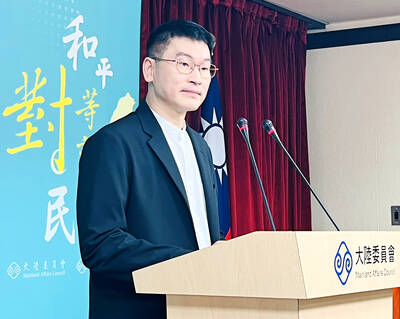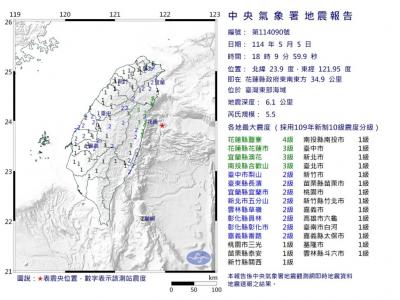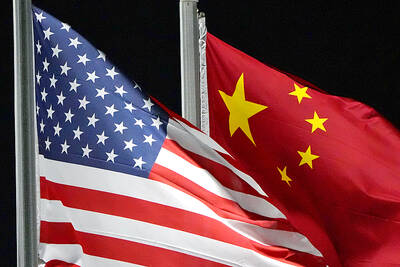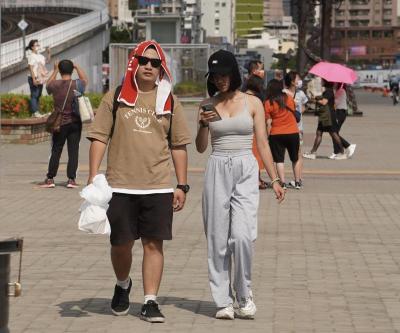A new study on the 228 Incident that has yet to be made public provides alternative viewpoints on one of the defining moments in Taiwan’s history that are likely to attract harsh criticism from certain corners.
Chu Hung-yuan (朱浤源), a research fellow at Academia Sinica’s Institute of Modern History, said on Saturday that the latest research report on the 228 Incident discovered the Chinese Communist Party (CCP) had already penetrated all levels of the Republic of China government before 1945 and had been the main force behind attacks on the government during the 228 Incident.
Furthermore, George Kerr, the author of the book Formosa Betrayed and former US vice consul in Taiwan, and other officials in the US administration had interfered with politics in Taiwan, playing an important role in the 228 Incident, Chu said, adding that the Presbyterian Church in Taiwan had also participated in attacks during the incident.
Chu and his colleagues have received funding from the Taiwan Foundation for Democracy over the past eight years to research the 228 Incident. The final report, which runs to 700,000 Chinese characters, was handed to Legislative Speaker Wang Jin-pyng (王金平) — who doubles as foundation chairman — late last month and has not been made public or published so far.
Chu and his colleagues say that based on the name list published on the Internet by The Memorial Foundation of 228, the actual number of victims who died or went missing in the incident was only about 800, which differed radically from the 1,500 to 20,000 people estimated in previous study reports.
The report also says that at that time, Taiwan provincial chief executive Chen Yi (陳儀) had only 700 troops who were incapable of indiscriminately killing and firing guns at Taiwanese.
Chu described the 228 Incident as a small-scaled “peasants’ revolt.”
Within mainstream Taiwanese historiography, mostly influenced by the pan-green camp, Chu’s report is bound to evoke strong opposition.
Chu said he would also suggest the government amend school textbooks as per his report after he returns to Taiwan.
Chu briefed the media, researchers at the US Library of Congress and a few members of the overseas Chinese community at a Seven Seas Chinese Restaurant in Maryland, on Saturday. He said he had also been invited by overseas Chinese groups to discuss his report in New York, Washington and Florida.
He said the report made five main breakthroughs. The first is that the use of oral history by Hsu Hsueh-chi (許雪姬) and other researchers was likely to insert “unnecessary emotions.” The second is the key role of the underground CCP. The third is the intervention of US “hawkish” figures. The fourth is the exceptionally small number of people in the military stationed in Taiwan at the time and the fifth is the Presbyterian Church’s “wide participation in the attacks.”
Chu was critical of the book Formosa Betrayed, recognized as a classic by Taiwan independence supporters, saying Kerr had been gathering information for the US before World War II broke out.
Kerr actively advocated for Taiwan to come under a UN mandate after the war, Chu said, adding that Kerr also encouraged people to rebel against the government and abetted students attacking the Taiwan Railway Administration during the 228 Incident.
Chu said Kerr was the initiator of “the uncertain status of Taiwan” and also had a role in affecting key words in the Treaty of Peace with Japan (commonly known as the Treaty of San Francisco) that changed from Japan’s surrender of Taiwan to the Republic of China (ROC) government to a surrender to the Allies, leading to the continued challenge to the legal status of the ROC in Taiwan.
However, Chu said members of the underground CCP who attacked the government had mostly escaped and many of the victims killed in the incident were innocent, including political elites and intellectuals.
Some victims compensated by The Memorial Foundation of 228 were actually CCP spies, such as Lin Liang-tsai (林樑材), Pan Chin-shin (潘欽信) and brothers Ku Jui-yun (古瑞雲) and Ku Jui-ming (古瑞明), he said, adding that those were “clearly mistakes.”
He said the estimates on the number of victims did not include Mainlanders.
Chu said the 228 Incident was not a case of economic conflict, but rather cultural conflict, invoked by the Chinese Nationalist Party (KMT) regime’s drastic reforms, including the abolition of Japanese publications and demanding Taiwanese people to speak and write in Mandarin Chinese, one year after its takeover.

An essay competition jointly organized by a local writing society and a publisher affiliated with the Chinese Communist Party (CCP) might have contravened the Act Governing Relations Between the People of the Taiwan Area and the Mainland Area (臺灣地區與大陸地區人民關係條例), the Mainland Affairs Council (MAC) said on Thursday. “In this case, the partner organization is clearly an agency under the CCP’s Fujian Provincial Committee,” MAC Deputy Minister and spokesperson Liang Wen-chieh (梁文傑) said at a news briefing in Taipei. “It also involves bringing Taiwanese students to China with all-expenses-paid arrangements to attend award ceremonies and camps,” Liang said. Those two “characteristics” are typically sufficient

A magnitude 5.9 earthquake that struck about 33km off the coast of Hualien City was the "main shock" in a series of quakes in the area, with aftershocks expected over the next three days, the Central Weather Administration (CWA) said yesterday. Prior to the magnitude 5.9 quake shaking most of Taiwan at 6:53pm yesterday, six other earthquakes stronger than a magnitude of 4, starting with a magnitude 5.5 quake at 6:09pm, occurred in the area. CWA Seismological Center Director Wu Chien-fu (吳健富) confirmed that the quakes were all part of the same series and that the magnitude 5.5 temblor was

The brilliant blue waters, thick foliage and bucolic atmosphere on this seemingly idyllic archipelago deep in the Pacific Ocean belie the key role it now plays in a titanic geopolitical struggle. Palau is again on the front line as China, and the US and its allies prepare their forces in an intensifying contest for control over the Asia-Pacific region. The democratic nation of just 17,000 people hosts US-controlled airstrips and soon-to-be-completed radar installations that the US military describes as “critical” to monitoring vast swathes of water and airspace. It is also a key piece of the second island chain, a string of

The Central Weather Administration has issued a heat alert for southeastern Taiwan, warning of temperatures as high as 36°C today, while alerting some coastal areas of strong winds later in the day. Kaohsiung’s Neimen District (內門) and Pingtung County’s Neipu Township (內埔) are under an orange heat alert, which warns of temperatures as high as 36°C for three consecutive days, the CWA said, citing southwest winds. The heat would also extend to Tainan’s Nansi (楠西) and Yujing (玉井) districts, as well as Pingtung’s Gaoshu (高樹), Yanpu (鹽埔) and Majia (瑪家) townships, it said, forecasting highs of up to 36°C in those areas